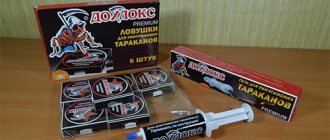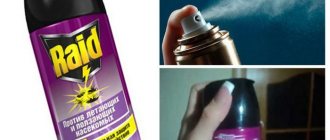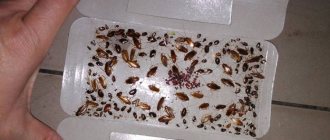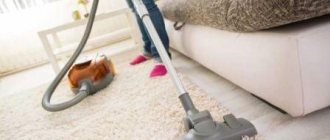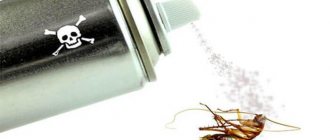With the arrival of the summer season, as well as on vacation in a country house, in addition to pleasant troubles and worries, the issue of fighting various insects and mosquitoes that do not allow us to spend comfortable evening time arises.
Hearing their squeak in the darkness of the night, only one desire appears - to kill. Because you clearly understand that because of these creatures you will no longer have a restful sleep.
What is an insecticidal lamp?
The main feature of insecticidal lamps is environmental friendliness and safety.
Insecticidal lamps (killers of flying insects) operate from the mains or batteries. Unlike chemical insecticides, they do not emit harmful substances and do not have an unpleasant odor. Insecticidal lamps can be used in residential and non-residential premises for a long time, even if there are people there. Their operating principle is quite simple. The device consists of two blocks - one of them attracts insects, the other destroys them. There are two types of traps: electric insecticidal lamp-traps of insects (EILN) and adhesive EILN. In the first case, UV lamps attract flying insects. Moving towards the lamp, they die when they fall on the grid, which is under voltage. In the second case, instead of a high-voltage discharge, an adhesive plate is used.
The dangers and effectiveness of ultraviolet radiation
Behind these plates there are LEDs that should emit ultraviolet light with a certain wavelength of 350-360 nm, thereby attracting mosquitoes.
Many “experts” are afraid that such ultraviolet radiation is harmful to vision and will burn your eyes. This means that such lamps are traps and are harmful not only to insects, but also to humans.
But this statement is true only for powerful quartz lamps. That is why glasses are worn under their radiation.
In these same light bulbs, there will be even less ultraviolet radiation than from solar radiation on a clear, fine day.
If it was a directed laser beam at a specific point in the room, and you were under its influence, then it would be a different matter.
And it turns out that these anti-mosquito lamps are absolutely harmless to health.
Although it must be admitted, there were attempts to introduce full-fledged laser guns, which would shoot down mosquitoes with their beams as they approached.
The well-known Bill Gates and his wife Melinda were involved in the project and draining their money.
The ultimate noble goal was to help African countries fight malaria.
But in the end, the project was expectedly canceled as unrealistic. As if at the very beginning of the journey it was not clear that the Chinese, with their cheap and no less effective options, would win.
Here is a video demonstrating their laser anti-mosquito gun. It’s fine for a beautiful movie, but for some reason it didn’t work as a real mass product for poor African users.
There is also an opinion in reviews and testimonials that in fact ultraviolet radiation does not attract insects at all, and simple bulbs with warm light are even more effective in this sense.
However, here is what Professor Yu.A. Zakhvatkin says about this. in his book “Course of General Entomology”.
As you can see, for a mosquito it still makes a difference what kind of light the light bulb emits. That is why they chose ultraviolet radiation for the manufacture of such devices.
Kinds
There are many different lamps for killing and repelling insects. Some insecticidal devices differ from others in size and configuration.
- Models equipped with a fan adapted to catch flies and mosquitoes. Installed indoors, they create air flow and attract flying insects.
- In other devices, one ultraviolet electric lamp may be installed. More powerful products have two light bulbs.
- Some devices come with a built-in blue lamp.
Products also differ in power consumption - it can range from 5 W to 30 W.
How insect traps work
There are 2 types of insect repellent lamps, which differ from each other both in operating principle and in efficiency. Lamps with ultraviolet radiation do not repel, but kill insects. The LED elements installed in the device produce ultraviolet radiation under the influence of batteries, which attracts insects.
Mosquitoes and midges flock to the ultraviolet source, come into contact with the energized grill and die. The electric current is quite weak, therefore it is not dangerous for people. When using ultraviolet lamps, you need to be especially careful and follow safety precautions.
The advantages of such devices are that they:
- effective - when mosquitoes fall on the net, they die instantly;
- environmentally friendly, do not produce odors during operation;
- not dangerous for children and pets.
There are also repellent lamps (from mosquitoes for the street, as well as from other insects). They do not destroy, but repel midges. According to the principle of operation, such devices resemble a standard fumigator. However, they use stronger repellent substances.
Advantages and disadvantages of insect repellent lamps
The key advantages of insect repellent lamps are as follows:
- Most of these devices are powered by solar panels. Therefore, they will not need to be constantly replaced. All that is required is to turn off the lamp and place its floor under the rays of the sun to recharge;
- the low cost of such devices makes them accessible to many people;
- During operation, the mosquito and insect repellent lamp does not produce a “burnt” smell;
- The devices effectively cope with their task, destroying insects or repelling them.
Insect repellent lamps have their disadvantages and drawbacks:
- efficiency will be high only in the evening and at night;
- If you touch the grid of a switched-on lamp, you may get an electric shock;
- the result of the device’s operation does not look very aesthetically pleasing, because there are many destroyed mosquitoes near and inside the lamp;
- The device must be located in a place with low humidity. Also, if it is cloudy outside, the batteries will not be able to recharge properly.
Installation locations
For trap lamps to work effectively, you need to know how to place them correctly.
It is recommended to install them not in the center or end, but at the border of the room and open air. That is, not far from the door or window.
Then they will work much better, stopping a bunch of living creatures at the entrance. Some place them in street lamps, on paths.
1 of 3
Thus, they try to contain the blood-sucking creatures as much as possible, even on the approaches to the house. However, the effectiveness of this method is questionable.
After all, street posts and bollards are intended for other purposes.
Although in several cities in North America, traps of this kind are also placed on the street, but for a slightly different purpose. There are even maps of their location with location reference.
Based on the number of insects caught in traps over a certain period of time, the percentage of the norm is calculated. And if it exceeds the permissible values, on a certain night cars begin to drive around the area and actively spray the poison.
Or they release a large number of pre-bred dragonflies in this area.
Features of operation
Insecticidal lamps can be used around the clock, but they work most effectively in the dark. During the day and if there are other light sources nearby, the rays are much less noticeable. In addition, insects are distracted by other sources of ultraviolet light. When used during daylight hours, it is recommended to install the device in a dark place. It should be borne in mind that its range of action will be reduced by approximately half.
The light source, which is the main element of insecticidal lamps, has a limited service life. As the device is used, the glow temperature begins to change and the emitted wave decreases. Insects react less well to changed light, so the effectiveness of the device decreases. To prevent this from happening, it is recommended to periodically change the light source.
When used around the clock, the resource is no more than 1 year, when turned on only at night - about two years.
Advantages
Insecticidal lamps are one of the most popular methods of controlling insects. This is due to their many advantages:
- safety and ease of use;
- ease of maintenance and installation;
- efficiency;
- absence of odor and harmful emissions;
- reliability;
- long service life.
The main disadvantage is the ability to combat only flying insects. The recommended installation height for devices is 2-5 m, so they do not attract pests below this level. To kill ants, cockroaches and other crawling insects, you will have to use chemicals.
Safety
The use of insecticidal lamps does not pose a threat to human health.
All live parts are covered with plastic elements. The current supplied to the grid does not exceed 20 mA. This value is deadly for insects, but does not pose any danger to humans. The ultraviolet radiation produced by the lamp is too weak to cause any harm to health. Such devices can be used in residential areas without fear.
Lamps are much less dangerous than mosquito sprays. When insects are killed with chemicals, the air is poisoned. You can enter the room only after thorough ventilation. Insecticidal lamps do not emit gas or other harmful substances during operation, so no harm is caused to the respiratory system.
Device
The design of the lamp includes the following elements:
- frame;
- ultraviolet emitter;
- energized metal grid;
- insect collection tray;
- switch;
- power cable.
Optionally, the device can be equipped with several lamps, a fan that attracts insects and other accessories.
Classification
Insecticidal lamps are divided depending on their purpose and operating conditions:
- professional for outdoor installation;
- household street;
- professional devices for installation indoors (catering establishments, hotels, etc.);
- household room;
- industrial (installed in food production shops, farms, etc.);
- mobile (portable versions powered by batteries).
Expert opinion Pavel Maksimovich Torsunov
An important characteristic of a lamp is its power. The area of influence of the device on insects depends on it.
By power, traps are divided into 3 categories:
- small (impact area – from 30 to 100 m²);
- medium (from 100 to 500 m²);
- large (area more than 500 m²).
When choosing a device, you should take into account not only the power, but also the purpose (for indoors or outdoors).
Structurally, traps are divided into 3 types:
- Lamps with E27 base are the most compact. They can be screwed, for example, into a regular chandelier. Often such devices have a dual purpose: a block of LEDs provides regular white lighting, and a low-power ultraviolet lamp located behind it serves to attract insects. The metal grid to which voltage is applied is located next to the base. Another advantage of such devices is their low cost. The main drawback is the lack of a tray for collecting dead insects: they simply fall on the floor or into the glass shade of the chandelier.
- Lanterns are intended for installation on a wall or ceiling. In the center is a source of ultraviolet rays. It is surrounded by a mesh around its perimeter, through which an electric current passes. There are modifications of street lamps. In addition to an ultraviolet lamp, a block of LEDs is often installed in them, but they are ineffective as the main light source. The main advantage is the impact on insects within a 360⁰ radius.
- Panels are the most effective means of controlling insects. The design uses at least two ultraviolet sources. The back wall of such devices is solid. Designed for installation on a wall or on a flat horizontal surface (for example, a bedside table). Due to the large number of lamps, the panel can be used as a lamp. The disadvantage is the high cost.
Types of mosquito lamps
Also on store shelves you can find models that operate in two light streams. For example, ZappLight bulbs.
They emit both neutral white, with a brightness of several hundred lumens, and ultraviolet light.
The first one turns on for normal lighting, and the second one at night. The size of the light bulb determines the area where insects will be attracted.
Mosquitoes fly into this light, touch the plates and die from a high voltage click. This is a kind of electric chair for them.
Such lamps can be used not only in the bedroom, but also on the street or on farms, in cowsheds, and rabbit hutches.
Do not forget that mosquitoes can be active carriers of any infection. True, this will be a slightly different type of lamp, differing in both size and shape.
The most common examples are these, hanging on a hook.
1 of 3
But there are also giant models.
I can't even imagine who they are intended to hunt. Bats?
You can also buy hand traps in the shape of tennis rackets.
But here, before going to bed, you will have to actively wave your arms.
The principle of operation of electric insect lamps
The principle of operation of electric insect lamps
The design itself is a housing in which ultraviolet lamps of insecticidal traps are fixed. Manufacturers fence them with a fine mesh or lattice. Electricity is supplied to the fine-mesh frame of the lamp itself (high-voltage discharge 2,000–5,000 V). A current of such strength is not dangerous for humans.
The lamps emit long wavelength light (350–360 nanometers). Ultraviolet radiation attracts insects. Flying up to a luminous object, flies and mosquitoes fall on the grille, after which they die due to electric shock. Dead insects fall off the pallet. This part is usually removable. A tray is installed under the lamps. Periodically it needs to be removed and cleaned.
Electric insecticidal lamps help against flies, wasps, midges, mosquitoes, and moths. But their effectiveness is noticeably reduced in daylight. Insects react poorly to bait in bright light. It is recommended to install insecticidal lamps in shaded areas.
The protective grid on the housing prevents hands from touching live parts. This allows you to completely safely install and maintain insecticidal lamps. The price of high-voltage traps depends on the manufacturer, the number of lamps in the device and other indicators.
Principle of operation
The principle of operation is based on ultraviolet light waves (350-360 Hm), which are produced by the emitter.
They attract insects. These rays have no effect on humans or domestic animals. Insects fly up to a lamp located behind a metal mesh through which an electric current that is fatal to them passes. After that, they fall into a tray (it must be cleaned periodically).
Some models use an adhesive plate instead of a metal mesh. Such devices are intended for installation in explosive objects.
When an insect comes into contact with the grill, a microscopic discharge is generated that can ignite flammable gases. Insects that fly up to the lamp stick to the installed surface. The disadvantage of such designs is the need to replace the adhesive plates daily.
Operating principle of adhesive insecticidal traps
Insecticidal lamp trap
The principle of operation of adhesive EILNs is identical: the paws lure insects, only they do not die from electricity, but stick to the adhesive cartridge (plate). Such devices can operate without replacing the cartridge for about 7 weeks. If insect densities are high, the insecticidal lamp plate may need to be replaced more frequently.
When choosing a device, you need to take into account that the more lamps it has, the larger the area it can serve. However, the UV insecticidal lamp must be replaced periodically. This affects the final cost of the equipment.
Household flying insect killers
Household flying insect killers
All household lamps are equipped with convenient trays and a practical grille that protects against accidental contact with parts exposed to high voltage. The cases are made of durable heat-resistant plastic. The modern design of these devices will fit into any interior. Most models are suitable for outdoor and indoor use.
The equipment helps to minimize insecticidal chemical treatments. The lamp destroys all types of mosquitoes in a short time. It works silently. However, when insects hit the high-voltage grid, clicking noises may be heard.
Instructions for using insecticidal lamp traps
- It is necessary to ensure maximum interception of insects. To do this, traps are installed between the entrance and the place where mosquitoes and flies accumulate. Use at least one lamp for each input.
- Installation height – 2–5 meters. You can attach modules to the ceiling or walls. This is done taking into account the trajectory of the insects.
- The lamp module should not be visible from outside the room. The optimal distance from the door is 3 meters.
- The installation site should be free from drafts and air flows created by fans and air conditioning systems.
- You should not choose a place for traps near light sources (windows, lamps).
- An installation scheme with three levels of protection is considered optimal - insects are intercepted near the doors, then those who have passed through the first level are caught. The third level of safety completes the scheme.
- Over time, insect trap lamps become less effective. The insecticidal lamp is changed approximately once a year. You can buy this equipment in Moscow in specialized stores, or by calling us. Our customers receive lamps at a competitive price.
What to look for when choosing
The question of whether the mosquito lamp works or not becomes the cornerstone when choosing it. If you make the wrong decision, the lamp will be of no use. In order not to throw money away and to ensure protection from mosquitoes, you need to pay attention to 3 points:
- Place of purchase. It is worth giving preference to an official store with a good reputation.
- Before you buy the device, you need to read the opinions of network users. Reviews.
- Features of use - at home or on the street, on the site or on a hike. All aspects of use should be taken into account.
Where can it be used
The production of insecticidal lamps is a process in which developers must take into account all the safety requirements for devices in areas with special requirements. For example, there are models that are not equipped with a special tray for insects, so the remains of insects fly to the floor. This is completely unacceptable in some enterprises, in particular, in food warehouses, shops, food industry workshops, etc. In such conditions, insecticidal lamps with enhanced light exposure are used (green light increases efficiency by 30%) and a recessed tray. For industrial facilities, there are models with several lamps and increased dimensions, which allows you to protect a larger area. Many devices are immediately equipped with unbreakable, shatterproof lamps, which also adds advantages in terms of safety.
So the insecticidal lamp can be used everywhere, you just need to choose a device with the necessary characteristics.
Fly tapes and fumigators - harm or benefit
Wanting to save a little money, the owners buy adhesive tapes, fumigators and install mosquito nets. All items have both advantages and disadvantages. The advantages include:
- Ease of operation.
- Relatively cheap.
- Reusable.
- Efficiency.
More cons:
- Budget cost. This is a very relative characteristic. For example, the plates or liquid in the fumigator will have to be constantly changed by purchasing additional consumables.
- Reusable use - yes, but the fumigator will have to be kept plugged in, which means electricity costs will increase. As for adhesive tapes, these “garlands” do not decorate the room at all, and even cling to clothes and hair.
- Ease of use is questionable. To clean the mosquito net, you will have to remove it, wash it, dry it and then install it.
As for efficiency, this plus instantly turns into a minus in rooms with high requirements for cleanliness. Nets, tapes and fumigators are strictly prohibited in catering establishments, and fumigators can cause allergies and asthma attacks.
Another drawback is the inability to use conventional devices in places without access to power or in the open air. The ribbons will dangle helplessly in the wind, and the bracelets and repellent plates will not work without a heating source.
Review of popular models
There are several varieties of electrical appliances in question on the market. Models differ in design, ergonomics, technical characteristics and, accordingly, price.
Well brand insecticidal lamps (Taiwan)
The products of this brand are intended for installation in public and industrial premises, warehouses. The power range of the devices varies from 8 to 80 W. The appearance of the brand's devices is shown by the image of the WE-150-2 device.
This is a pendant-type device, equipped with a removable tray and 2 lamps. Capable of destroying flying insects over an area of up to 80 m2. L-15D or LB-15 lamps are used. The dimensions of WE-150-2 are 470x130x330 mm, and the device weighs 7 kg. The device consumes no more than 50 W. The electric discharge trap is only suitable for dry rooms. The price on the market is from 10 thousand rubles.
On a note! Household appliances of this brand are smaller in size and are offered on the market in the price range of 6-7 thousand.
Anti-mosquito lamp Skat (Russia)
Suitable for use outdoors, on a terrace or in a gazebo. Impact area up to 20-30 m2. There are models powered by mains power, a built-in battery and/or solar panels. Depending on the version, they can be equipped with a stand attached to the bottom of the lantern for installation in the ground. Price from 900 to 1500 rubles.
Devices from the Italian brand Mo El
These insecticidal lamps are intended for use in residential areas. There are many form factors for devices, and original technical solutions are also used: an internal surface with a replaceable adhesive tape, for example, or a fan for sucking in insects. The compact model MO-PLICK 398 can work as a night light, simultaneously luring and destroying insects.
The price of devices on the market is from 3-4 thousand rubles and above.
HILTON (Germany)
HILTON GP-4 Black is a popular representative of a series of models of anti-mosquito lamps of the German brand for effective control of insects. This is a household device for installation in small residential premises (up to 50 m2). The power of the device is small - 4 W. Cost 400-500 rubles.
On a note! The brand’s model line also includes more powerful models costing about 2-3 thousand rubles.
Customer Reviews
Many consumers were delighted with this device. The insecticidal lamp works very well against flies, midges and mosquitoes and is 100% worth the money spent on it. Buyers note that this is an excellent replacement for electric fumigators, which often emit an unpleasant odor and sometimes cause headaches. Consumers are also pleased with the declared safety of the device: the device does not contain any harmful substances and does not emit dangerous toxins, which means it can be used in rooms where pregnant women and children are. In general, there are a lot of positive reviews about these devices and very few negative ones.
The disadvantages include the fact that the device is good at destroying flying insects, specifically flying ones, since others simply cannot reach it. So ants, spiders and small bugs are most likely not going anywhere.
Also, consumers sometimes refer to the lack of autonomy of the device. That is, buyers know that such a lamp requires electricity to operate, which means it cannot be taken to barbecues or fishing. Although, perhaps they are simply not familiar with the entire range of products, since autonomous insecticidal lamps powered by solar or conventional batteries have been on sale for a long time.
Sources
- https://mosecoservice.ru/ispolzuemaya-tehnika/insektitsidnye-lampy/
- https://stroy-podskazka.ru/muha/lampy/
- https://poklevka.com/poleznoe/54-lampy-ot-nasekomyh.html
- https://tehno-gid.net/dacha/insektitsidnaya-lampa-lovushka-dlya-borby-s-letayushhimi-nasekomymi.html
- https://FB.ru/article/209831/chto-takoe-insektitsidnaya-lampa-effektivnost-pribora
- https://tehnika.expert/dlya-sada/prochaya-sadovaya-texnika/insekticidnye-lampy.html
[collapse]


